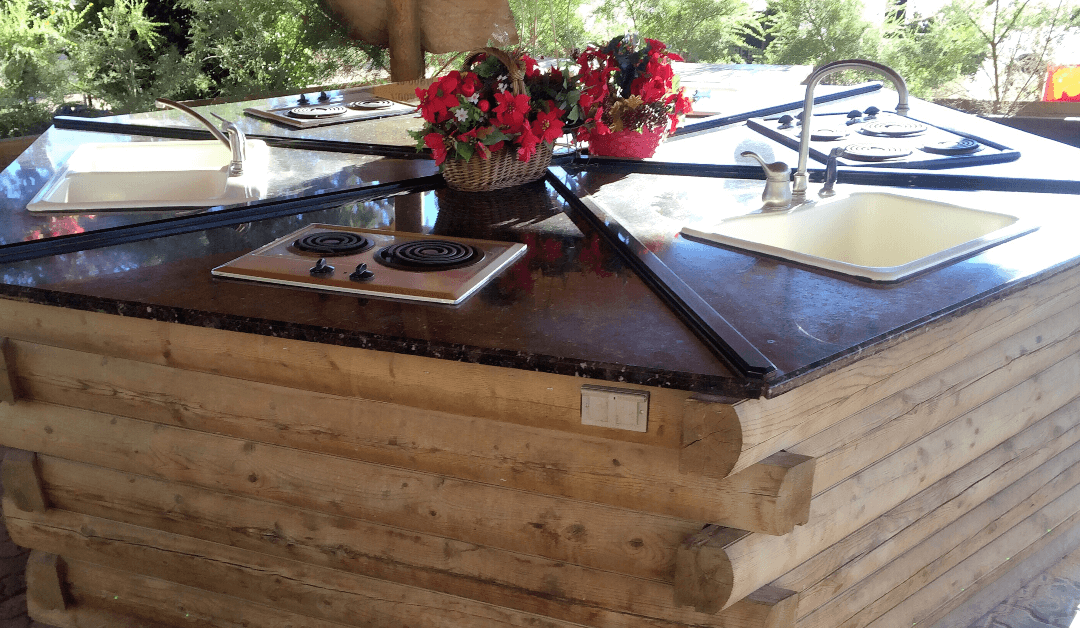Summertime is synonymous with BBQ meals. And what other better place than the breathtaking outdoors? Your kitchen says a lot about you, and an outdoor kitchen speaks volumes. Whether for your romantic dinner, the party of the year with friends, or the Christmas get-together, your outdoor living couldn’t get any finer with the addition. The best part is that this kitchen is everything you want it to be, with options like a fridge, sink, roofing, and lighting.
Most importantly, the emphasis is on weather-tolerant features from the cabinets, counters, fixtures, sinks, and flooring. One of the important parts of the outdoor kitchen is the outdoor cabinetry. Here is how to go about the installation process:
The Installation Process Of The Outdoor Cabinetry You Should Ideally Follow
- Figure out the location
Most homeowners install the kitchen close to the house, which makes processes such as grabbing water, electrical, and gas lines easier. Always opt for a dry, leveled, and stable area. How much sun exposure do you wish for? If you wish for less, find the leafy trees. Look out for elements such as septic tanks in the location, active or filled, since burying utility lines may be an issue. Ensure that minimal additional landscaping will need to be performed after the cabinet installation. In the beginning, check the floor for pitch side-to-side and front-to-back to establish the highest point. If you intend to incorporate under-counter appliances, this will influence the finished height of the exterior cabinets.
- Work on building a base
You can elevate your kitchen with a ground-level or floating deck for outdoor cabinets for the grill. Another option is masonry or stone patio pavers for a solid-rock floor or building a gravel patio.
- Draft the plan
For outdoor kitchens, the possibilities are endless, unlike the indoor kitchen with various layout guidelines. It is advisable to have the cabinetry, like the sink, grill, and stove, on the closest part of the house.
- Running utilities
Our patio kitchen cabinets feature standard utility access holes for electrical, plumbing, and gas services. It is important to align these services with current access holes. Cabinets can be drilled, but we highly discouraged that. If making a hole is necessary, the recommended method involves a metal nibbler or a metal bit hole saw. Electrical outlets (GFI) should be positioned in the cabinet adjacent to other appliances for the easy resetting of the GFI and proper fitting of the appliances.
- Building outdoor cabinets
Get the cabinets and unpack them, ensuring they are complete. Avoid any damage like scratches. Also, be sure not to misplace any parts, especially accessories.
The cabinets feature a vinyl coating for protection during transport and installation. Do not entirely remove the vinyl until after the completion of the installation. You can peel the parts that will be hard to peel off after installing, like the back and side panels.
Perform a full drawer removal. Remove the drawers, doors, and shelving before installation. The purpose is for an effortless installation, lifting, and access to installation parts.
Erect the cabinets in the final position. After completing the assembly, cabinets can pose a challenge during movement.
Start by installing the first cabinet at the highest point while affirming the toe kick section is a minimum of 4.5” in height and then next is the installation of the adjacent cabinets. This will make your work easier and modification-free.
Not to worry if the cabinets flex. Just lock them into place with one another. Before the installation, you should adjust and tighten the screws on the top rails of the cabinet. Then attach the single cabinets to frames in stucco, masonry, or stone installations.
Completely install the cabinets all screwed together with the countertop, appliances, and doors installed.
Our Outdoor Cabinetry Materials
Other than style and budget, the material for your outdoor kitchen will be nothing like the indoor kitchen. Our high-quality cabinetry is made from plastic (HDPE-high density polyethylene), aka boat board. It features UV properties to stand up to adverse weather outdoors and has repeatedly beat the tests of time for more outdoor meals in your yard. It is also adhesive and will eventually pull apart.
The outdoor kitchen introduces the ultimate fun and beauty to the yard while ensuring convenience from luxurious outdoor cabinetry. While installation skills go a long way, the installation process should also focus on quality products, especially weather-tolerant features for longevity.

